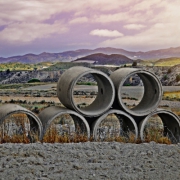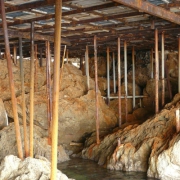News from the deathbed – how marginal technologies may enjoy a revival because of low oil prices
Free-falling oil prices are blamed for much of the ills of the world – unfairly so as I pointed out many times. The low prices also hold the promise of a better, more efficient, greener, cleaner, more decentralized, and more sustainable energy future.
However, very high oil prices have also given birth to a myriad of technological developments that would never have seen the light of day had those oil prices not hovered in the stratosphere for so long. Conventional wisdom must, therefore, dictate that as those dizzying prices have come down to more palatable levels, those exotic technologies must have gone away as well, as surely only those high price levels would ever justify their use.
Not so fast.
Technology indeed has a price and the more technology is applied to something, the more expensive it must logically get. However, that’s not always true as sometimes you need a technology jump for other reasons than mere savings. Sometimes you just need the new thing as it saves your life as compared to the old thing that takes life away from you.
Somali farmers switching from cow dung burning to the much cleaner LPG bottles have such a case. The burning of cow dung in huts for heating and cooking is one of the leading causes of death in the cradle of mankind and it takes an especially heavy toll on kiddies and the elderly. Switching over to propane – even when it is more expensive – brings such improvements to daily life that the monetary consequences appear secondary in comparison.
But this principle stretches beyond the realm of Somali herders.
4 years ago, I was involved in a little startup called Fuel Emulsions. The company was developing marketing strategies and structures for a technology that mixed heavy and diesel fuel with water to produce a stable emulsion that would burn much more cleanly and help save some cash. The exact workings of this technology are better described in this more than 30-month-old blog post.
Fuel Emulsions did not succeed because of mismanagement which was also the reason I quit the venture very early in its existence when there was everything was still on hugs and kisses. However, I was always convinced that technology had its rightful place in the energy world – and that continues to be so today. How that – you might say – as cheap oil and subsequent cheaper fuels must have wiped out the margins the technology would have needed to make it into its natural born niche market.
Although emulsion technology was fit for every heavy fuel and middle distillate, it soon became very clear to me that it had a special edge in the heavy fuels world. Most of the oil we produce from boreholes is a pretty heavy blend which means that there remain incredible amounts of heavy stuff after the refining process. This is also the dirtiest cut from the barrel which does not endear it to the greenies.
The one domain, where heavy fuels are still very dominant is international maritime transport. As soon as they leave coastal waters, most vessels switch to burning heavy fuel which can easily be seen from the black plumes they scorch the sky with.
However, the world is out on a chase for those black plumes to wipe them from the face of the planet by creating ever more stringent Environmental Control Areas around some of the most potent economic regions of this planet which make operating those vessels ever more difficult. They have only the option to either switch to MGO, which is in itself not the cleanest option or they convert fully to LNG as a bunker fuel which is quite a technological leap or they install scrubbers for the exhaust which is very expensive and technologically uncertain.
However, vessels have very long economic lives and many legacy vessels still have a decade or way more than that to go before they are good for the scrapyard. Most of those vessels are too old to be converted to LNG propulsion – or simply said it does not make any economic sense to rip a vessel built for HFO open, take the old chuggers out, and put LNG tech in. New-builds often cost less than that.
This means that LNG – as good as it is as a bunkering solution and as much as I will always endorse it for newbuilds – will only make it into those very newbuilds which also means that the replacement rate from HFO to LNG will be slow and gradual. All the others (and there are many, many others) will have to go for diesel, scrubbers, or stay away from those ECA’s which will very soon cover much of the economically interesting surface of the sea. That’s a hard slap in the face.
But Emulsion Fuels might just give those dinosaurs a new lease of life.
As I have explained in my older post, Emulsification of Heavy Fuel also cleans up the exhaust stream. As the burn is cooler, it produces much less NOx, and as the fuel droplet is exploded into much tinier fragments just before the burn, the burn is much more complete which produces more Carbon but much less of the ultra-dangerous particulate matter which is responsible for so many deaths on earth.
HFO-fuelled vessels might not become as squeaky clean as LNG-fuelled vessels but they would get back a new lease of live enabling ship owners to keep running them until they are really old metal and can be disposed of when they have delivered their service.
When oil prices were high, fuel made up a significant proportion of the OPEX of a ship. Back then, it made sense to replace sooner with newer, more economical ships. However, with fuel not being the bogeyman anymore, the steel and the human factor weigh heavier in the economic calculus and this means running old iron as long as possible.
Low oil prices sure have killed ultra-expensive technologies such as GTL but they might have given Emulsion Fuels and some other marginal stuff the shot in the arm they were waiting for.


















Folks have been there and done that – it was called Oriemulsion and PDVSA has a lot of patents.